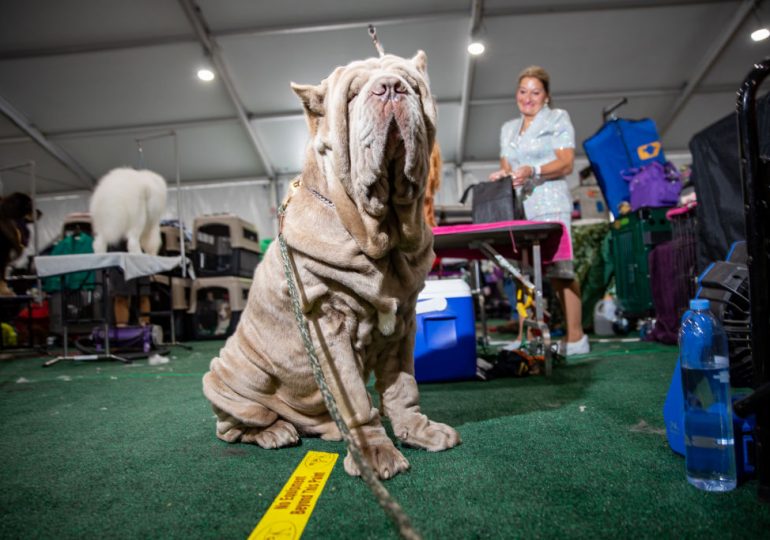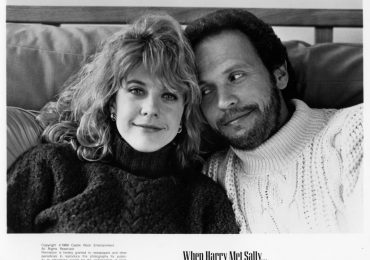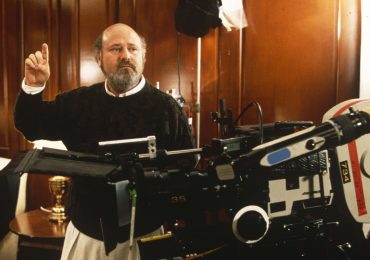I spent three years among dogs with bloodlines like British royalty. In our world, they would be earls and duchesses. Their names are in stud books that go back countless generations. They are the product of centuries of careful breeding to make them the most perfect versions of themselves.
Eh. I like mutts better.
[time-brightcove not-tgx=”true”]
It’s not that I didn’t like the dogs I met at dog shows around the U.S.–including the most prestigious of them all, the Westminster Dog Show. They were beautiful specimens: athletic, combed to a high sheen, well-behaved. The only dog that growled at me the whole time was a Petit Basset Griffon Vendéen (shortened in the dog world to “PBGV”) at a show in Tennessee. It belongs to our beloved former vet, who shows dogs on the weekends. Maybe her dog thought I was a little too friendly.
The dogs on the dog-show circuit—a never-ending tour of big cities and small towns all over America, a rolling caravan that I came to think of as “Dogland”—have to meet brutal guidelines just to step into the ring. Each of the American Kennel Club’s 200 recognized breeds has a written standard that outlines what a prime example of the breed can and cannot be. Some breed standards run thousands of words. A brief rundown of flaws that can disqualify a dog from competition:
Doberman pinscher: Overbite of more than three-sixteenths of an inch, or underbite of more than one-eighth inch.
Papillion: All white or not having any white.
Shetland sheepdog: Height of less than 13 inches or more than 16 inches.
Dogs that meet all the rules and make it to the top of the show world are just about physically perfect. I spent a lot of time with a Samoyed named Striker who won more than 100 dog shows all over North America. One time I asked his handler, Laura King, to tell me where Striker fails to meet the Samoyed breed standard, which runs to 1,600 words. The only thing she could think of was a slight discoloration on the inside of his lip.
None of this is by accident. Breeders choose the puppies they believe to be “show quality” when they are just a few weeks old. (The other dogs in the litter are deemed “pet quality.” Dogland is the only place where that phrase serves as a dig.)
The ones who grow up to be champion show dogs are then bred with other champion show dogs to produce, naturally, even more champion show dogs. But that process, repeated over generations within a breed, leads to what people in Dogland refer to as “line breeding.” What it means, in practice, is that show dogs are inbred.
Inbreeding is fairly common among all types of animals. Intensive inbreeding, in situations like the show-dog world, can have long-term medical effects. That’s because recessive genes that could get muted by crossbreeding get amplified instead. This means that nearly every breed of purebred dog has chronic health problems that never get fixed. In 2015, a group of researchers analyzed the records of nearly 89 thousand dogs that came through a California veterinary hospital over a 15-year span. They found that purebreds were more likely than mutts to have any of 10 different genetic conditions—everything from cataracts to dermatitis to bloat (a distended stomach condition that can be fatal).
Perfection always comes with a price.
Thinking about that price led me to think about the parade of dogs I’ve been lucky enough to know throughout my life. Nearly all of them have been mutts, and you could tell just by looking at them. The dogs I’ve loved have had crooked teeth and scrawny butts. They walked a little sideways or drooled from one side of the mouth. They were all, in their own way, perfectly imperfect.
My wife and I had the great luck to live with a yellow Lab mutt, Fred, who arrived in our lives as a stray puppy in the ditch in our old front yard. We never figured out exactly what else he was. Our vet thought he had some German shorthaired pointer in him, which made sense, because occasionally he’d stop in the middle of the yard and go on point. As far as we could tell, he was never pointing at anything in particular. Something in his DNA must have told him he should point now and then, just to keep up the family tradition.
Fred wouldn’t have lasted five minutes in a show ring. His back end sometimes strayed when he walked, like a fishtailing car. But he was the most loving and lovable dog I’ve ever been around. Never once, in his entire life, did he harm another living thing. As far as I know, he never even ate a bug.
It broke our hearts when old age, and a tumor on his liver, finally got him. But he made it to 14 and a half years—more than two years longer than the average life of a purebred yellow Lab. I think of that now as extra innings, free baseball, a second helping of dessert. He blessed our lives and part of the blessing was how long he stayed.
There were many purebreds in Dogland that I would have taken home in a second if I’d had the chance. It was breathtaking to watch them sometimes, like being in the front row at an NBA game. But if you gave me all the dogs in the world to choose from, I’d start with the ones that are a little lopsided, asymmetrical, funky. Our quirks are features, not flaws. Give me a mutt.
Leave a comment







